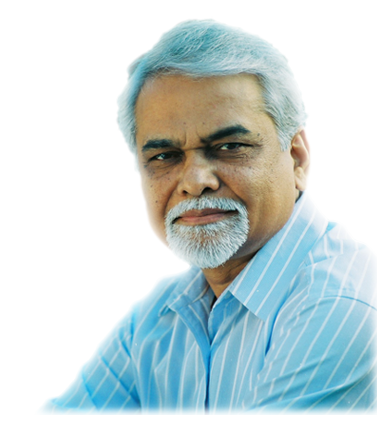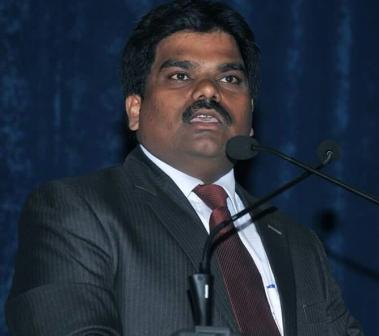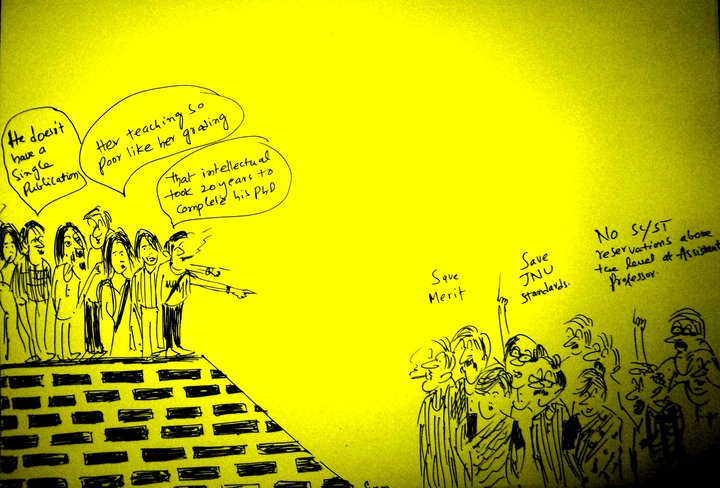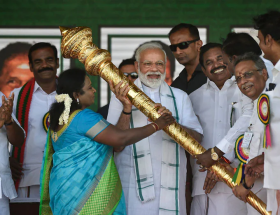Essay 3. ‘What Babasaheb Ambedkar Means to Me’
Mudnakudu Chinnaswamy
 If I was a tree
If I was a tree
The bird wouldn’t ask me
Before it built its nest
What caste I am. ~
Anti-caste literature from members of the outcastes and lower castes in Karnataka has a very long history. The phrase Dalit literature is often used to describe writings by Dalits since the 1970s, with a peak during the 90s. As a form of protest literature it still continues, and no new literary movement is on the anvil, at least in Kannada. A large posse of dalit literature is available in almost all major Indian languages. But, has it helped the society, people; is the moot question. Strangely, each language gained momentum in a specific genre, like poetry in Kannada, short stories in Tamil, autobiographies in Marathi and so on. It took a long time for the mainstream litterateurs to recognise it. I am happy to note that the elite and the erudite are shedding their prejudices and taking serious note of what is happening here. This cannot be denied because if we take literature as the reflection of life, this literature concerns nearly a quarter of the Indian populace.
Dalit literature could be described as the mouthpiece of the marginalised, told in pastoral grandiloquence. This is not literature for the critics to evaluate at leisure, only to say that there is no art in it, although it is rich with native similes and metaphors. By and large, dalit literature has espoused the negative side of the social and cultural face of Mother Bharat. So, naturally it becomes anathema to caste Hindus who are the chief spokespersons of Indian culture. I therefore feel that there is a need for a different kind of aesthetics for engaging with dalit literature.
Dalit literature is the source material which could be the eye opener for social change. Socio-cultural parameters stand still in India as the rulers, the law makers turned a deaf ear to Dalit literature and refused to listen to its voice, message and vision.
Even today, the Indian village is a cesspool of inequality and caste discrimination. Obviously it is because of the social ignorance and lack of awareness and will to change it by the governing classes. We have only slogans on one side and the legislations which are largely neglected on the other. I would like to elaborate on this with a few incidences that took place in different parts of the country, not in the distant past but in the recent months, after 68 years of independence.
1. In a government school of Mandi district in Himachal Pradesh, the upper caste students refused to sit in the same row with dalit students during mid-day meals.
2. In a recent survey conducted in Karnataka, in many schools, the teachers themselves ask dalit children to sit separately and assign menial jobs to them like cleaning toilets.
3. It is reported that Rajasthan University hostels are fostering divisions on the basis of castes. Majority of its 18 hostels are sharply divided on caste lines like Jats, Gujjars, SCs and STs and Brahmins. A similar divide is seen at girls’ hostels also. Here, Jats are a majority in Kasturba Hostel, Brahmins in Saraswati and SCs in Mahi Hostel.
4. On September 19, 2014 last rites of a man at Mehlol village near Godhra taluka of Gujarat had to be conducted outside the crematorium after upper caste men objected to cremation at the common place. It is a common factor in the whole of country that dalits are not only denied access to the common burial grounds but are not even provided a separate place. It is interesting to note that in one of the villages in Beed district of Maharashtra, a dead body was taken to the national highway and a traffic jam was created with a view only to expect the police to come and settle the issue.
5. In a wedding at Gugal Kota in Alwar on 21st June 2014, a dalit groom was riding a decorated horse to the bride’s home as per the prevailing custom. But the Rajputs in the village disliked such a celebration by a Dalit family and the groom was pulled down from the horse on the road and the guests were attacked.
6. In Virudhunagar of Tamil Nadu, a 16 year old boy’s wrist was cut by his upper caste seniors in the school simply because he was wearing a watch.
7. In a village of Karnataka, a barber’s family was ostracised because he did hair-cut to untouchable dalits
8. A few months back, a senior dalit official of the postal department had retired from service in Kerala. The next day his chamber was cleansed with homa, yajna etc., by fellow officials.
9. A temple visited by Mr. Manjhi, the then Chief Minister of Bihar had also been cleansed with a similar ritual.
10. In Ahmedabad, no upper caste builder would sell a house to a dalit. In fact, it is not easy for even an educated dalit to get a house on rent in any of the urban centres, including Bengaluru.
This list can go on endlessly, reflecting how untouchability is senselessly practiced on Dalits and lower castes. These are examples of routine atrocities committed on vulnerable dalit men and women. Rapes of women from dalit and other marginalized communities are perceived and treated differently from rapes on upper caste women. This has very deep roots in the exploitative patriarchal practices of Hinduism through caste, an instance of which is distilled in the poem Bettale Seve:
The usual male priest
was praying to the deity – right, mother?
“The whole time I’m inside the sanctum,
the life in me is rotting away,
I have no entertainment,” he said.
Ellamma appeared to him –
“Ask your heart’s desire”, she said.
“Once a year at your festival
the womenfolk should go naked
in your presence. The whole body
should be revealed to us,”
he replied.
“Granted,” said Ellamma, and holding
her sari tight around her,
she climbed the hill.
In this way
an atrocity
was sanctioned by the gods and became
“service in the nude”
The humiliations and insults the dalits undergo day in and day out are insurmountable. How do we explain cruelties like a dalit boy being forced to eat human excreta and his genitals being burnt? Dalit writers cannot escape from the haunting injustice meted out to their brethren and chant hymns praising the Mother Goddess. All these factual realities of a violent caste society form the crux of dalit literature.
Apartheid could be removed because it was physical. The physical or racial identity with visible markers has a telling effect on the person at the receiving end, this is not the case with caste. Being ethnically or racially undifferentiated, Dalits and others do not have distinct physical identities. A social intercourse between two similar individuals proceeds finely as long as one’s caste is not known. Once it is revealed, the upper caste person is bound to withdraw on some spurious pretext (exceptions are not ruled out by the people who have outgrown this obnoxious system). This is adding insult to injury, like salt sprinkled on a burning wound, because one is a dalit and for no fault of his. Therefore, as Dr Ambedkar had pointed out: ‘caste is not only notional, it is legal and penal’. It is physical too, in a sense since it is related to the religiosity of a person. The religion which administers purity and pollution based on castes demands adherence to it. A Hindu hardly compromises with the caste rules although it is undemocratic, for fear of wrath of god.
Democracy and caste system cannot go together. They are like oil and water, they do not mix. Majoritarionism does not contribute to democracy in India. It is caste which gets masqueraded as majority and therefore this reign should be called, if I can coin it, as ‘casteocracy’. With what pain Dr. Ambedkar said, “In this country virtue has become caste ridden, morality has become caste bound, and charity begins with caste and ends with caste”, cannot be easily comprehended.
Our country needs to consider untouchability and caste system as a violation of human rights, instead of making mere legislations and punishing people at random. When our neighbouring country Nepal acceded to taking strict measures against untouchability and caste system at the UN, India denied it saying she has taken measures to solve it by making mere legislations. I hope India attempts washing the dirty linen in public before it stinks.
Any discussion on reservation for dalits and other marginalised communities is met with abominable answers which are certainly out of willful ignorance. Therefore, it is not enough to eulogise Ambedkar with a lesson or two, here and there, in the academic text books. It is through him the real India is explored and the idea of India is exposed. It is not too late, his writings and speeches besides dalit writings would become part of syllabus at various levels and the growing young generation should be taught that the practice of caste system and untouchability is inhuman; not only that, it shows the country in a poor light. It is only when the diabolical caste system is annihilated and Babasaheb Ambedkar’s dream is realised that this country can achieve Equality. A country with such a rigid social, economic and cultural stratification of its people, cannot hide it by boasting about progress and achievements. Social inequality and cultural poverty cannot be eradicated by sending rockets to other planets.
With this verse from a poem I had dedicated to Babasaheb Ambedkar, I wish everyone a happy 125th year anniversary celebration:
~The sound that I make
does not deceive politely
or bury itself in the mouth –
it’s a dazzling sword
brandished and
swung at earth.
The sound that I make
doesn’t cool the eyes like sheet lightning –
like thunderbolts
it flashes
striking
all inhuman
systems
and conditions. ~
The verses and poems in this article were translated by Prof Rowena Hill from the original Kannada version, they can be read here The Shared Mirror.
~~~
Dr. Mudnakudu Chinnaswamy is a poet and writer and a noted public speaker. He is a vocal advocate for eradicating the caste system, the inhuman practice of untouchability and against fundamentalism. Poetry is his passion but he has worked in other genres of literature as well, besides having a wide range of interests in social work, theatre and cinema. He has brought out 33 books so far which include 6 collections of poetry.
His poetry, translated into Spanish by Rowena Hill as ‘Poemas: Mudnakudu Chinnaswamy’, has been published by the Venezuelan Govt. (CONAC) in 2005 under ‘World Poetry Series’.
He has been a participant at many International Poetry conferences. He recently presented a paper on ‘Dalit Literature in translation’ and read his poems at the University of East Anglia, Norwich, England conducted by AHRC in June 2015.










